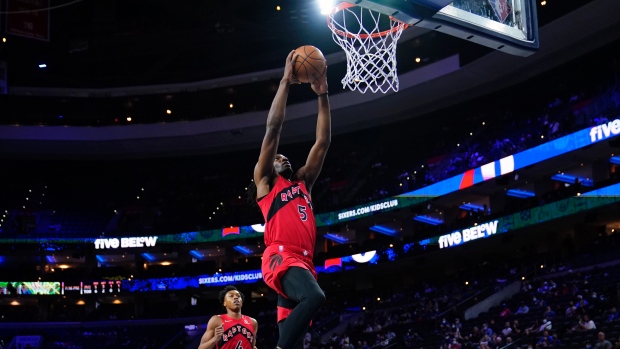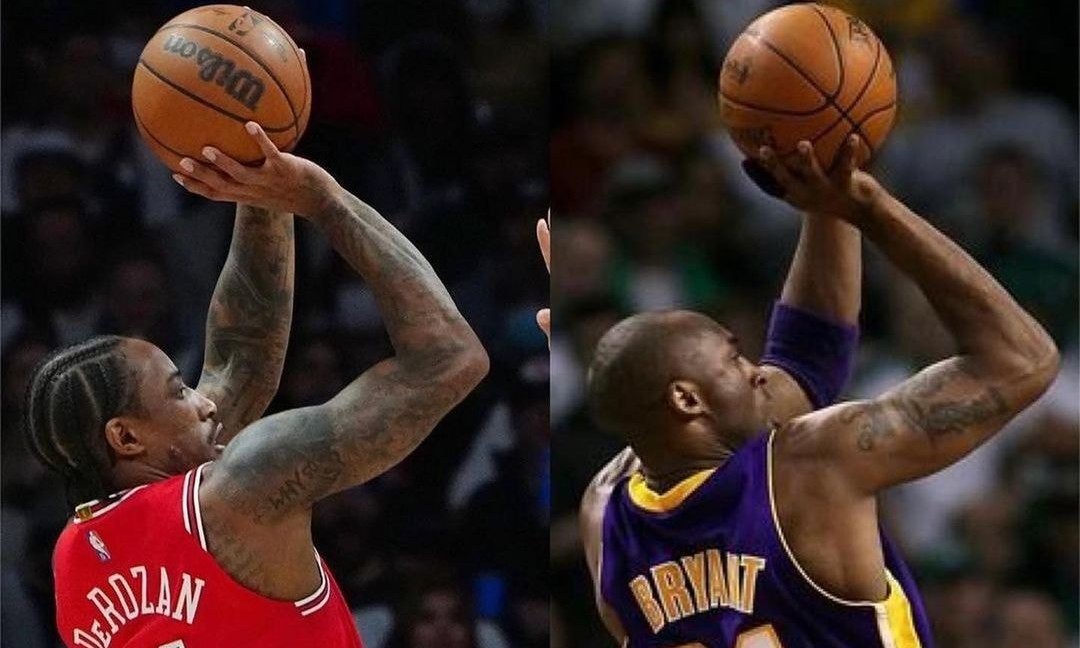The following is a guest post by Orri Bogdan.
Forty four percent from two, 23 percent from three, 57 percent from the line, and a true shooting percentage of 44.
We’ve had some bad Raptors over the years, whether you go back to Andrea Bargnani, or even someone like Rafael Araújo. Sure, we’ve been blessed with the first half of JV’s prime as well as the tail-end of Gasol’s, but outside of those two the center position has always been a position of need for us, so looking back to stats like these draws a few names to mind.
But for now, let’s put the focus on one guy in particular. A guy known for having a Twitter fanbase larger than his own following: the legendary Aron Baynes. Before his short stint here, Aron was always that one vet we all kind of wished we could steal for a handful of second rounders, so when Masai and Bobby signed him up for a one-year deal, Raptors fans accepted him with open arms, the top comment, with 2.5k upvotes being “BAYNES CLUB RISE UP.”
Given that the Raptors were looking for a starting-level center, his age at the time (34), along with his fit with the Raptors as his 90s, six-foot-11, slow-footed, lumbering playstyle gave cause for concern. It is perhaps clear in hindsight that the aging vet, though he had been relatively injury-free at the time, would be unlikely to match the Raptors’ identity of a fast-pace offence, and a switch-heavy defense. There were some good signs — he had just come off the most statistically successful season of his career, averaging a career high in minutes (22), starts (28), as well as box scores stats (11.5 points / 5.6 rebounds / 1.6 assists). Better yet, pretty much every opposing fanbase lauded him with praise after praise, backing up both his skill as a basketball player, and the quality of his person.
It almost seems comical that someone so lauded as an upstart, high-impact role player could end up as Raptors enemy number one, while basically losing the ability to shoot from three while also being below average on defense. With news about his recent need to undergo intensive physical therapy making it a possibility that his time with the Raptors wasn’t the “true” Aron Baynes experience, his playing poorly would only affect the Raptors for one season (at worst). With one year guaranteed, he was always meant to be a stopgap solution, with the hope being that he could fit the Gasol role as a three-point shooting center with decent defensive IQ and a touch of passing.
When looking at Baynes as an option, I would argue there were an abundance of good signs — Aron had just upped his three-point attempts from a meager 21 in 2017-18 to a more average 61 in 2018-19 and finally an impressive 168 in only half a season’s worth of games in 2019-20. Who’d have guessed he’d drop from 1.4 3-pointers made-a-game to just 0.5? Let alone from shooting 35 percent from three to 26 with the Raptors?
Raptors fans had no idea what was coming. While netting a 3-and-D type of player like Myles Turner would have been ideal, shooting centers — athletic or not — are hard to come by.
But this article isn’t really about Aron Baynes. Those aren’t even his stats in the first paragraph. His shooting stats were actually a fair bit better: 53 percent from 2, 26 from 3, 70 from the line and a true shooting percentage of 50. So who is this article really about?
Precious Achiuwa.
While Aron Baynes’ tenure in Toronto represented the tail-end of the big man’s career, those impressively poor shooting stats that somehow manage to clock in lower than all of Aron Baynes’ (and with a similar sample size) belong to Precious Achiuwa. That’s not to say that Aron Baynes was better than Precious has been so far — from a statistical perspective Baynes was slightly worse, with a BPM of -4.5 to Precious’ -3.2.
However, Aron Baynes signed to a one-year deal and was meant to fill a gap while Toronto looked for younger, better centers. Precious is that younger, better option. He was Toronto’s reward for assisting the Heat in acquiring the GROAT, with Goran Dragic opting to workout in a rival team’s gym instead of attending games with the Raptors. While Dragic ended up drawing most of the fan interest with his existing accolades and unwise comments, Precious was always a key — likely the key — part of the trade.
But then, what did fans really expect of Precious? He only attempted 3.7 shots per game last season, though he made them at a much more efficient 54 percent. Threes? He shot zero.
While Precious has underperformed from an offensive standpoint in many of his games, he’s been stalwart defensively and has even shown some flashes on the offensive end — his handle on the ball far exceeds that of most big men; he’s already averaging more assists per game than Baynes’ career average, and while he’s not shooting a ton of threes, he’s averaging over one attempt a game and has the potential with more reps to go from shooting relative bricks at 30 percent to a more respectable percentage.
Precious’ profile has always been about the uniqueness of his strengths, especially those that are rare to find at his position. His ability to put the ball on the floor and either keep the ball moving or finish are uncanny for a center, and combined with his ability to rebound and defend despite his somewhat small height for a center are the exact skills in a big man the Raptors have been compiling between Siakam, OG, Scottie, Dalano, Yuta, etc.
A good way to think about his value is to think about where and why he was drafted. He was a first-round pick, number 20 in 2020, from an organization that has been proven to hit on mid-late first-rounders. Pat Riley’s most important recent draft addition is inarguably Bam Adebayo, the number 14 pick in 2017. Adebayo was widely regarded for his similarity to none other than Pascal in his draft profile. So while his comp was Pascal, his first year mentor was Bam Aebayo. If Pascal had been taught by Bam, he might have ended up looking like a much different player. Achiuwa’s development was thus complex.
Interestingly, Bam looked similar (statistically) at the same age as Achiuwa. In his second season, Bam scored nine points a game, secured 7.3 rebounds, and averaged 2.2 assists in 23 minutes of action. Precious is currently averaging eight points, 7.6 rebounds, and 1.5 assists in 24 minutes of action.
This their relative PPG by years in the league:

And here is a rebounds comparison:

And assists:

Does any of this indicate that Precious could be the Squirtle to Bam’s Blastoise?
Probably not. While there’s no reason to think that the two would actually end up a similar type of player, Bam himself did comment before the 2021 season that Precious Achiuwa could be better than him in his rookie year: “I feel like his rookie year is going to be better than mine, me being honest. I feel like he has more skill than I did coming into my rookie year.”
From an offensive lens, the two are different players. Look at their scoring attempts, for example — Bam averaged 0.2 attempts a game from three, while Precious is already averaging 1.3. While Bam takes 57 percent of his shots between 0-3 feet from the rim, Precious takes a mere 40 percent from the same spot, opting to act like a bigger guard instead of an imposing, physical center, choosing not to rely solely on his strength as Bam is sometimes known to do. Offensively, the real similarity is their willingness and ability to pass, though Bam is obviously further ahead in this regard, both now and at the same age.
While Bam has already proven himself as a dominant inside presence, dictating opposing defenses and drawing double or even triple teams, Precious is merely tapping into his potential — that of a bigger, guard-like player — a player not too different from Pascal. While many non-Heat/Raptors fans might have thought Precious to be a Bam clone in Miami, it’s clear that their strengths and weaknesses vary in too many ways to compare. Now that he gets to learn from Siakam instead, it’s possible Precious continues to emphasize the paint less than Bam, instead prioritizing shooting and initiating from the outside. The signs, though still unproven with only 30 percent from three but with an encouraging 1.2 attempts per game, are already there. This could be Achiuwa’s best path forward.
The truth is that Precious isn’t perfect, but the type of player he represents is. What he could be in a year or two’s time could be the perfect fit for a Raptors’ franchise now fighting for title contention. Not because of what he is or how he’s performed, but because of the untapped potential. If any team had the option to swap their existing roster for a roster of 12 young, unique centers that all played with the same strengths as an idealized Precious Achiuwa, they would. The Raptors are nearly at that point, with just Fred, Gary, and Malachi not being between the heights of six foot seven and six foot nine.
Given that Fred and Gary are our clear primary and secondary 3-point threats, the emergence of either Scottie, Pascal, OG, or Precious as a 3-point threat could give birth to some scary all-big “small ball” defensive lineups. Achiuwa would by a lynchpin with his shooting and rim protection anchoring both sides of the ball.
Either way, the Raptors have shown that they are not only committed to an aggressive, switch-heavy style of play, but they’re already collecting the best players to do it. While Precious isn’t there yet — in fact, his shooting splits are all worse than Aron Baynes’ in his unforgettable but understandable stint here — I think it’s clear that Dragic (and now Thad Young) was never the real prize of the Lowry trade. And that trade, made more than clear by Raptors’ fans saying goodbye to the beloved Lowry, was always about Precious Achiuwa and players like him: players that can both unlock and represent our future.



